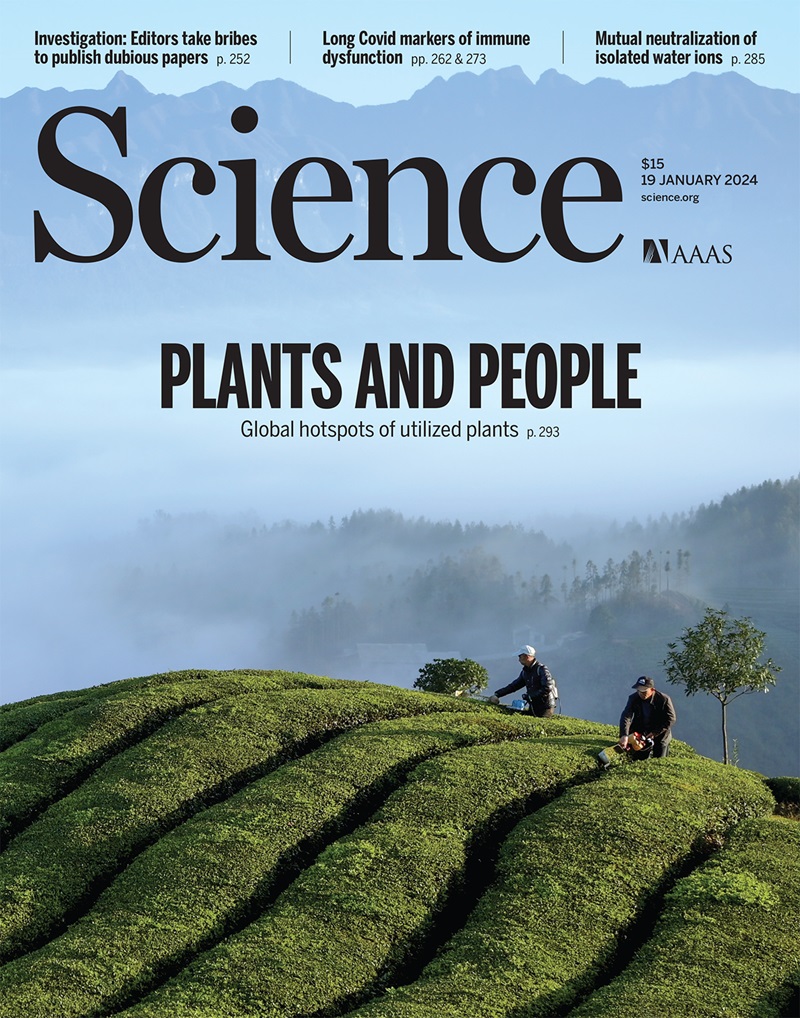Self-sustaining personal all-day thermoregulatory clothing using only sunlight
IF 44.7
1区 综合性期刊
Q1 MULTIDISCIPLINARY SCIENCES
引用次数: 0
Abstract
The human body must stay within a certain temperature range for comfort and safety. However, challenges for thermoregulatory clothing exist for harsh application scenarios, such as full day/night cycles, frigid polar regions, and space travel. We developed a flexible and sustainable personal thermoregulatory clothing system by integrating a flexible organic photovoltaic (OPV) module to directly acquire energy from sunlight and bidirectional electrocaloric (EC) devices. The flexible OPV-EC thermoregulatory clothing (OETC) can extend the human thermal comfort zone from 22°–28°C to 12.5°–37.6°C with a fast thermoregulation rate. The low energy consumption and high efficiency of the EC device allows for 24 hours of controllable and dual-mode thermoregulation with 12 hours of sunlight energy input. This self-powered wearable thermoregulatory platform has a simple structure, compact design, high efficiency, and strong self-adaptability with sunlight as the sole energy source.
仅利用阳光就能自我维持的个人全天候体温调节服
人体必须在一定的温度范围内才能保持舒适和安全。然而,在昼夜循环、极地严寒和太空旅行等严酷的应用场景中,体温调节服面临着挑战。我们开发了一种灵活且可持续的个人体温调节服系统,该系统集成了可直接从太阳光中获取能量的柔性有机光伏(OPV)模块和双向电致发光(EC)装置。柔性 OPV-EC 体温调节服(OETC)可将人体热舒适区从 22°-28°C扩展到 12.5°-37.6°C,并具有快速的体温调节速率。EC 设备能耗低、效率高,只需 12 小时的阳光能量输入,即可实现 24 小时的可控双模式体温调节。这种自供电的可穿戴体温调节平台结构简单、设计紧凑、效率高、自适应能力强,以太阳光为唯一能源。
本文章由计算机程序翻译,如有差异,请以英文原文为准。
求助全文
约1分钟内获得全文
求助全文
来源期刊

Science
综合性期刊-综合性期刊
CiteScore
61.10
自引率
0.90%
发文量
0
审稿时长
2.1 months
期刊介绍:
Science is a leading outlet for scientific news, commentary, and cutting-edge research. Through its print and online incarnations, Science reaches an estimated worldwide readership of more than one million. Science’s authorship is global too, and its articles consistently rank among the world's most cited research.
Science serves as a forum for discussion of important issues related to the advancement of science by publishing material on which a consensus has been reached as well as including the presentation of minority or conflicting points of view. Accordingly, all articles published in Science—including editorials, news and comment, and book reviews—are signed and reflect the individual views of the authors and not official points of view adopted by AAAS or the institutions with which the authors are affiliated.
Science seeks to publish those papers that are most influential in their fields or across fields and that will significantly advance scientific understanding. Selected papers should present novel and broadly important data, syntheses, or concepts. They should merit recognition by the wider scientific community and general public provided by publication in Science, beyond that provided by specialty journals. Science welcomes submissions from all fields of science and from any source. The editors are committed to the prompt evaluation and publication of submitted papers while upholding high standards that support reproducibility of published research. Science is published weekly; selected papers are published online ahead of print.
 求助内容:
求助内容: 应助结果提醒方式:
应助结果提醒方式:


